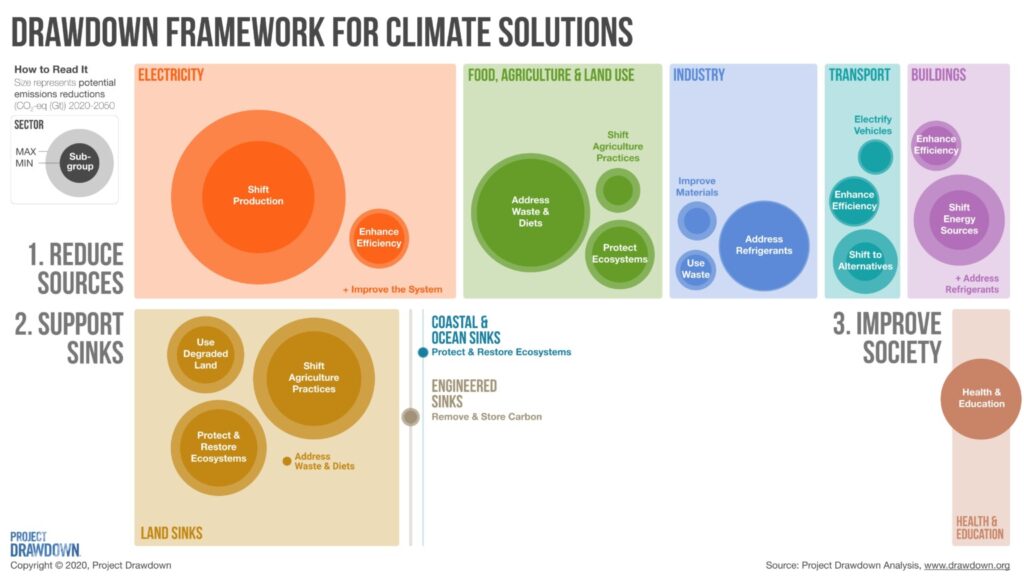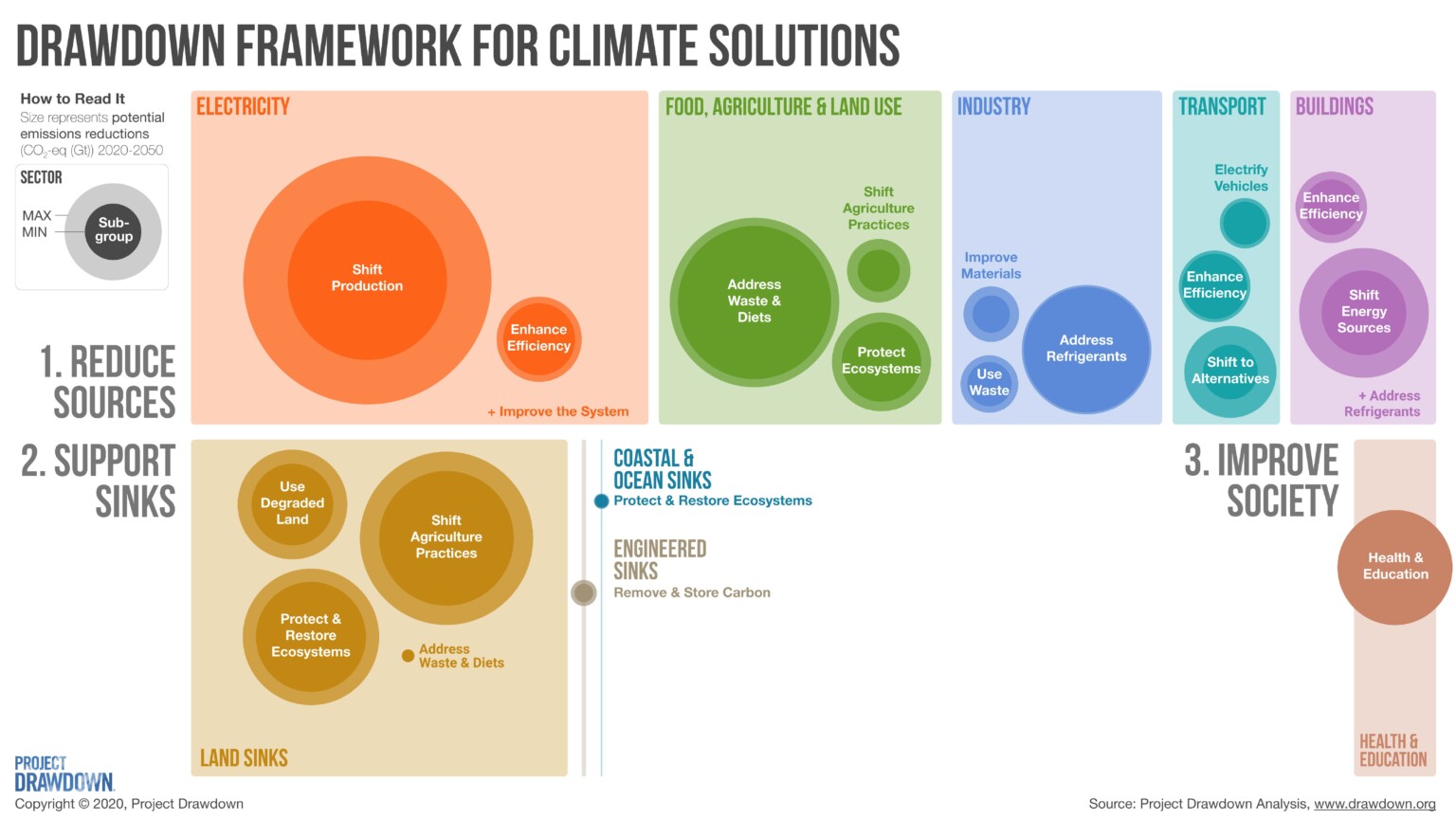The City of San Francisco is updating our Climate Action Plan. It will be the largest revision to our Climate Plan since the first one in 2004. The update follows on the Climate emergency declaration by the Board of Supervisors in 2019. We are in a planetary emergency, as the dismaying news of drought, fires, floods, rising seas, and dying forests and coral reefs remind us daily. The earth’s ecological crisis, of which the climate crisis is part, demands bold and urgent action.
Livable City helped author the City’s first climate legislation, and we’re working to make the City’s new climate plan complete and effective. We have adopted four principles to guide our climate work, and five major leverage points where we can make the biggest positive impact.
Four principles for climate action
- The Climate Plan should get to sustainability – net-zero or net-negative carbon emissions – ASAP. Net zero means that San Franciscans will collectively remove as much carbon and other greenhouse gases from the atmosphere as they add to it. San Francisco’s official target date for carbon neutrality, adopted this year, is 2035. That seems like an ambitious goal, but the science is telling us that sooner would be better.
- The plan should account for all of San Francisco’s climate emissions. San Francisco’s existing climate plan counts only emissions generated within City limits, including a portion of commute trips to and from the City. Doing it this way makes for easier accounting – it’s harder to estimate the impact of our activities outside City limits. However this accounting system misses most of the emissions caused by our activities – the food, goods, and building materials we consume, most of which are produced outside City limits, and the impacts of long-distance travel and goods movement by car, truck, air, ship, and rail. We may be missing as much as two-thirds of the greenhouse gas emissions we generate. The new plan should include a consumption-based inventory which captures the full impact we’re having on the climate so that we can match solutions to it.
- The plan should center on strategies which deliver multiple environmental benefits – climate protection, biodiversity, cleaner air, cleaner water, less pollution, less waste – and serve the catalyst and cornerstone of a citywide sustainability strategy. City government drafted a sustainability plan in the 1990s, but abandoned the effort. A comprehensive strategy for sustainability is more urgent now than ever, and the City’s climate plan and biodiversity strategy can be two important building blocks for it.
- The plan should advance equity. Our climate solutions should advance equity – economic equity, equitable mobility, health equity, quality public places and green open spaces for all, and equitable access to housing, education, essential services.
Five leverage points for climate action
We see five main leverage points for achieving our climate and sustainability goals – transportation, buildings, greening the city, food, and consumption and waste. These leverage points include ways we can reduce our net emissions to zero, and ways to protect and strengthen carbon sinks – the ability of living systems to absorb atmospheric carbon and atmosphere sequester it in the bodies of plants, animals, and microbes and in soil.

Transportation
Private cars are the largest single source of carbon pollution in San Francisco and statewide. Transportation is also the sector where San Francisco and California have made the least climate progress in the past decade. Our over-dependence on private cars accounts for over 90% of transportation emissions, and creates a host of other environmental, health, and societal problems. The smartest transportation strategy is mode shift – shifting trips from private cars to walking, cycling, and public transit. That means making walking and cycling more convenient, safe, and comfortable, making public transit more frequent, timely, reliable, and accessible, and creating walkable neighborhoods which put more of the needs of daily life within close proximity of home and good transit. The City’s goal is for 80% of San Francisco trips to use sustainable modes (walking, cycling, and public transit) by 2030, from about 50% now. Electrifying the transportation system to eliminate fossil-fuel emissions is important too, and complements mode shift.
Equity transportation strategies include improving walking and cycling safety (Vision Zero), enhancing public transit service in under-served neighborhoods, making sustainable transportation choices accessible and affordable to all, stabilizing and encouraging neighborhood-serving small businesses and community institutions to preserve or create ten-minute neighborhoods, and reducing the impacts of the transportation system – pollution, noise, traffic danger, and barrier effect – in equity communities.
Buildings
Buildings are the second-largest source of carbon emissions within City limits. Strategies for buildings include improving building efficiency through better insulation and more efficient mechanical systems, powering buildings with renewable electricity and phasing out fossil-fuel burning appliances like furnaces, water heaters, and stoves, and reducing emissions from building materials preserving, reusing, and repurposing buildings and choosing wisely when building new.
Equity building strategies include permitting more housing within the City, particularly affordable and space- and resource-efficient building types, assisting residents in designing, building, and financing building retrofits that enhance energy efficiency and comfort, and training residents for jobs in green building, and encouraging conversion of garage spaces to living and commercial spaces.
Greening the City
Greening the City – our natural areas, parks, public rights-of-way, yards, and even our rooftops and walls – has multiple environmental benefits – carbon sequestration, climate adaptation and resiliency, clean air, supporting local and migratory wildlife, conserving and restoring local biodiversity, cleaner air, cleaner water, street safety, beauty, and enhanced mental and physical health.
Equity greening strategies include planting street trees and sidewalk gardens in the least green neighborhoods, expanding usable green open space – parks, playgrounds, and community gardens – in the priority neighborhoods, conserving and restoring wild landscapes and wetlands, and enhancing walking, cycling, and transit access to neighborhood green spaces and larger City and regional parks and open spaces.
Food
Food, including raising and growing plants and animals, healthier, plant-based diets, preserving the Bay Area’s agricultural greenbelt, allowing more food to be grown within the City by creating more backyard and community gardens, encouraging urban farming in rooftop gardens and greenhouses, and restoring San Francisco Bay as a clean and sustainable food source.
Equity food strategies include food assistance for people who need it, reducing neighborhood ‘food deserts’ lacking healthy and affordable food options, expanding public and peer-to-peer education about gardening, healthy eating and nutrition, and cooking, and connecting small farmers directly with urbanites through farmers markets, public food halls, and community-supported agriculture (CSAs).
Consumption and waste
Consumption and waste is another major leverage point. Most of us consume too much, and too much of what we consume can’t be sustainably disposed of. We are familiar with the concept of reduce, reuse, recycle. However we’re finding out that much of what we consume and hope will be recycled, particularly plastics, won’t be recycled – and probably never could. Reducing consumption and waste means greater emphasis on reducing and reusing, sharing rather than owning, legislating the right to repair, and transitioning our material economy into a zero-waste, cradle-to-cradle, or circular economy, where everything we produce and consume either breaks down harmlessly (compostable), or can be safely and efficiently recycled.




